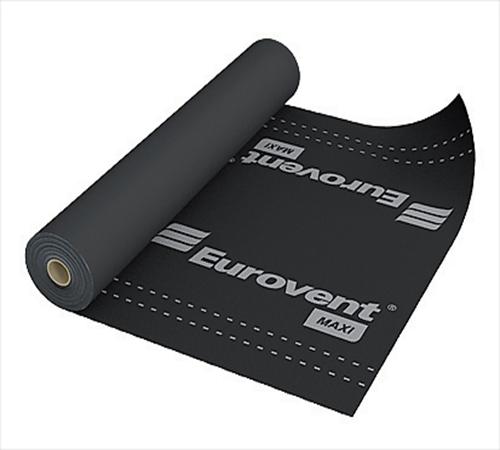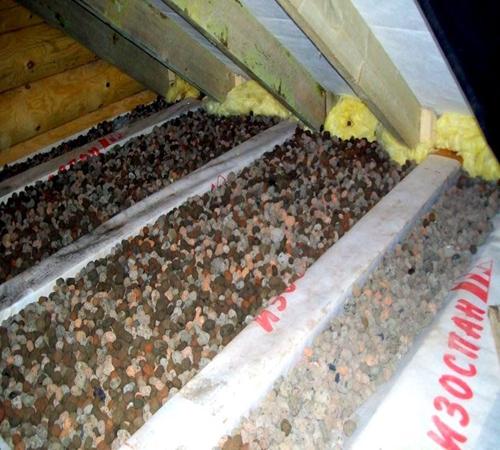Panel housing construction is widespread during the construction of multi -storey ...
|
|
The architecture of modern buildings involves a wide variety of aesthetic ... |
There are several varieties of concrete solution, which differ as in ... |
How to insulate the roof with expanded clay
So that with the onset of winter in the house it is always warm and comfortable to take care of warming the roof in advance. Today, more and more people choose expanded clay as insulation. It is everywhere available and inexpensively, as well as environmentally friendly and has excellent operational qualities.
- What is expanded clay, its advantages and disadvantages
- Tools and materials necessary for warming the roof with expanded clay
- Steam and waterproofing for expanded clay
- Roof insulation with expanded clay
What is expanded clay, its advantages and disadvantages
Expanded clay is light porous, material in the form of a small granular size obtained by firing clay. He gained popularity, both among professional builders and among home masters, thanks to the following technical indicators:
- high heat and noise insulation;
- frost -resistant qualities;
- refractory qualities;
- strength, inappropriateness of decay;
- long service life, inappropriation of temperature changes.
Expanded clay, the price of which is much lower than the price of other thermal insulation materials, is able to serve, unlike them, for many years. Its main advantages are:

- high thermal conductivity;
- low weight;
- unleashed by chemically aggressive environments;
- does not emit to the atmosphere of poisonous substances;
- this is the only thermal insulation material when working with which special knowledge, skills and experience are not required.
But this material has its drawbacks, although there are few of them:
- to achieve a high level of heat and sound insulation, you need to lay out the material with a rather thick layer;
- unstable to moisture, therefore, when warming raw rooms, a special film should be used for waterproofing;
- pretty fragile material, and damage to granules leads to a decrease in the quality of thermal insulation.
Tools and materials, the necessary roof insulation with expanded clay

In order to independently insulate the roof, the following materials and inventory will be needed:
- expanded clay on the roof;
- shovel and buckets;
- a log or a stick in order to compact a layer of insulation, and a rake to smooth it;
- film for waterproofing;
- roofing material in rolls;
- sharp knife;
- tiles or tiles for external coating.
Steam and waterproofing for expanded clay
The steam and waterproofing of the insulation layer is an important stage in the arrangement of the roof, which in no case should not be overlooked. As mentioned earlier, expanded clay is able to absorb moisture. At the same time, his thermal insulation qualities deteriorate sharply, and it itself becomes much more severe than in a dry form. This can lead to sad consequences, up to the collapse of the ceiling. Thus, when allowing a layer of expanded clay, the roofing life of the roof can be sharply reduced, and the repair will be required much earlier than planned.
None of the existing types of thermal insulation materials can properly protect the room from the cold if steam and waterproofing is not protected. The vapor barrier is usually mounted on the inside of the room, because It is the protection of the insulation from vapors that occur indoors, and waterproofing is mounted from the outside, because It protects the insulation from moisture coming from the street.

The most common waterproofing materials are films and membranes. Also very often used materials as styerpor, polyethylene film, foil, permamine.
Styropor is a type of foam and has excellent vapor barrier properties. Permamine is a roofing cardboard with bitumen impregnation. It is sold by rolls and is very good for waterproofing roofs. Foil and polyethylene film are more often used in order to protect themselves from condensate, because fluid does not accumulate on them.
Roof insulation with expanded clay
Most often, warming the roofs, builders use the following types of expanded clay:
- ceramzite crushed stone large material with granules up to 4 cm in size. equally good for both the roof insulation and for insulation of the floor and walls;
- expanded clay gravel is also coarse -grained material, the granules of which also reach a size of 4 cm and have an angular shape;
- expanded clay sand is finely dispersed material, the particles of which are not more than 5 mm in size. It is used as thermal insulation, in which the thickness of the layer does not exceed 5 cm.

It is quite possible to insulate the roof yourself if it is not possible to pay specialists.
Before starting work, it is necessary to study some features of the process of insulation. First of all, it is worth paying attention to the design features of the structure, its walls and roofs. The process of insulation should consist of several stages:
- internal sheathing;
- vapor barrier;
- stacking insulation;
- surface finish.
Description of work:
- When the roof is warming with expanded clay layer, the thickness of the material should be 25 cm. It is poured directly onto the vapor barrier film in the right amount quickly and accurately to avoid damage to the granules.
- For good heat and noise insulation, it is better to pour the layer thicker, but it is important not to forget about the maximum load that the roof is able to withstand. In this matter, it is better to adhere to the golden mean.

- Then expanded clay is thoroughly aligned and compacted, so that as few voids as possible are left between its particles. This is done either with hands, or using a special machine. It is advisable to make a screed on top of the first layer to give additional stiffness and strength of the entire structure, as well as to level the surface.
- Also, between the outer inner layers, several channels should be equipped, through which the air will circulate and excess moisture will be removed.
- Next, a roll roofing material that will crush it with its weight is laid directly on the insulation layer. He must overlap and have no gaps. At the same time, it is better to isolate them for the tightness of the seams using construction tape or bitumen mastic.
- The next step is tiles or tiles.
Many companies involved in the sale of building materials, as well as shops and construction hypermarkets, offer to buy expanded clay.
